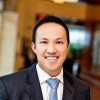If you're a baseball fan, you've likely heard that young athletes who overtax their throwing arms are increasingly turning to Tommy John surgery to get back in the game. But what's really behind the recent increase?
Michael L. Nguyen, MD, a specialist in sports medicine and arthroscopic surgery at Baylor Regional Medical Center at Grapevine in Texas, told RxWiki News a little more about Tommy John surgery.
What Is Tommy John Surgery?
Ulnar collateral ligament (UCL) reconstruction, more commonly known as Tommy John surgery, is a surgical operation in which a ligament in the elbow is replaced with a tendon from elsewhere in the body, such as the forearm, hamstring or foot.
This procedure was developed in 1974 for former Los Angeles Dodgers pitcher Tommy John. Today, UCL reconstruction is common among both collegiate and professional athletes.
The damaged ligament results from repetitive stress put on the elbow during the violent throwing motions involved with several sports, most notably baseball. In the operation, the new tendon is woven in a figure-eight pattern through holes drilled in the humerus and ulna bones to give the elbow stability.
According to Detroit Medical Center, the chances of a complete recovery after Tommy John surgery are between 85 and 90 percent. Rehabilitation takes between 12 and 15 months for pitchers and about six months for other players.
Which Athletes Are at Risk of UCL Injury?
According to Dr. Nguyen, most of the patients who get Tommy John surgery are baseball pitchers or any other type of overhead athletes, such as volleyball players, water polo players and throwing athletes.
“Pitchers make up the vast majority of Tommy John patients because they put their elbows under a lot more stress than any other athlete, any other position and any other sport,” Dr. Nguyen said.
Is UCL Reconstruction a Major Surgery?
According to Dr. Nguyen, Tommy John surgery is an outpatient procedure that doesn’t require a hospital stay.
“The entire surgery takes anywhere between 60 and 80 minutes, and [the patient] leaves a couple hours after waking up from anesthesia,” Dr. Nguyen said. “However, this is still considered major surgery. While it is performed often, it requires a 12 to 15 month recovery process to return to a high level of sport in a throwing athlete.”
The rehab process after a Tommy John surgery is extensive, according to Dr. Nguyen,
“First, you work on getting back the range of motion in the elbow,” Dr. Nguyen said. “Then, you work on strengthening your core, your elbow, your shoulder and getting your pitching mechanics back.”
How Common Is Tommy John Surgery Today?
According to Dr. Nguyen, Tommy John surgery is much more common today than in the past, especially among younger athletes.
“I’m absolutely seeing a larger amount of collegiate and high school athletes needing Tommy John Surgery,” Dr. Nguyen said. “The reason is multifactorial. Because of much greater quality and quantity of research on the subject, orthopedic surgeons are better at diagnosing it. Also, because kids are throwing more and harder than ever before, elbows are at higher risk of injury.”
Dr. Nguyen also noted a recent study that found about 10 percent of Major League Baseball (MLB) players have had at least one UCL reconstruction surgery at some point in their careers.
According to the MLB “Pitch Smart” campaign, evidence strongly supports that younger pitchers are undergoing the procedure at an unprecedented rate. Records from the American Sports Medicine Institute also show that the number of Tommy John surgeries performed on youth pitchers have more than doubled since 2000.
What Factors Can Contribute to UCL Injury Risk?
According to the MLB, a number of factors can contribute to the likelihood of needing Tommy John surgery. The single most important of these is daily, weekly and yearly overuse of the elbow.
Other factors include lack of rest, pitching while fatigued, poor mechanics, playing catcher when not pitching and playing on multiple teams at the same time.
What Can Young Athletes Do to Reduce Their Risk?
According to Dr. Nguyen, the two most important factors in preventing UCL injury are proper pitching mechanics and limiting throwing.
“Early sport-specialization, where kids play only one sport, is also a risk factor for elbow injury,” Dr. Nguyen said. “There’s only three sports [in which early sport-specialization] has been shown to be beneficial — swimming, tennis and gymnastics.”
According to Dr. Nguyen, more kids are also playing year-round than ever before, and doing so doesn’t give their young elbows a chance to rest from the rigors of a full season.
“The advice I usually give to parents is that kids always need to take two months off from their sport, no matter what sport it is,” Dr. Nguyen said. “It doesn’t need to be two months straight, but kids need to give their muscles a break.”








